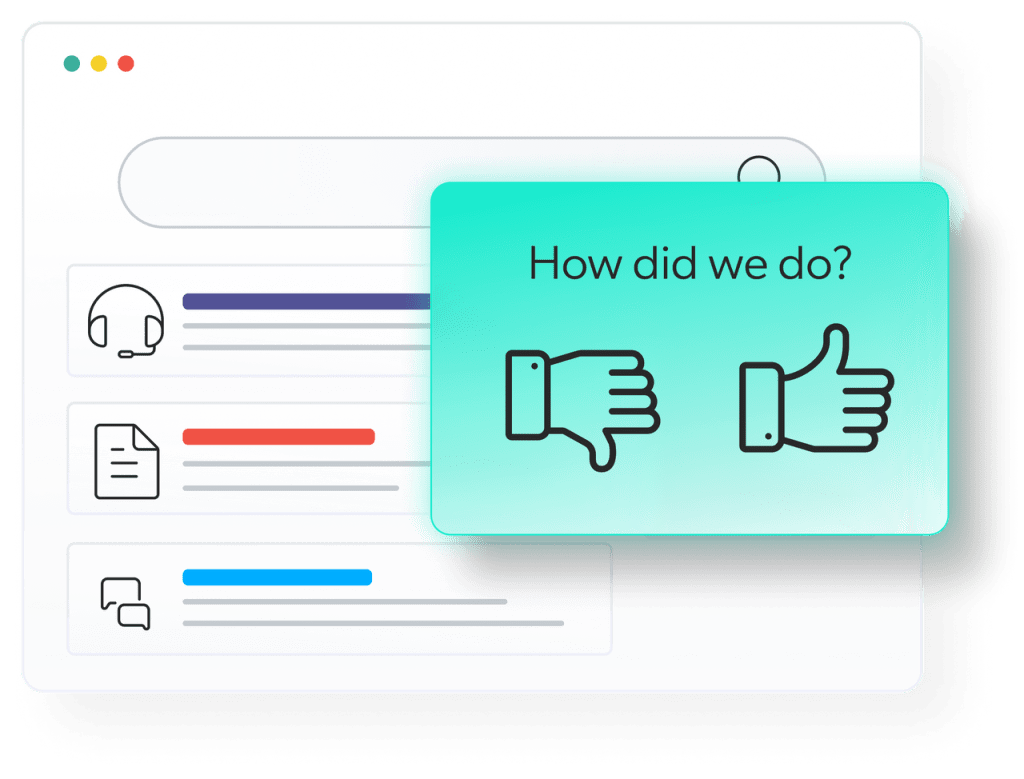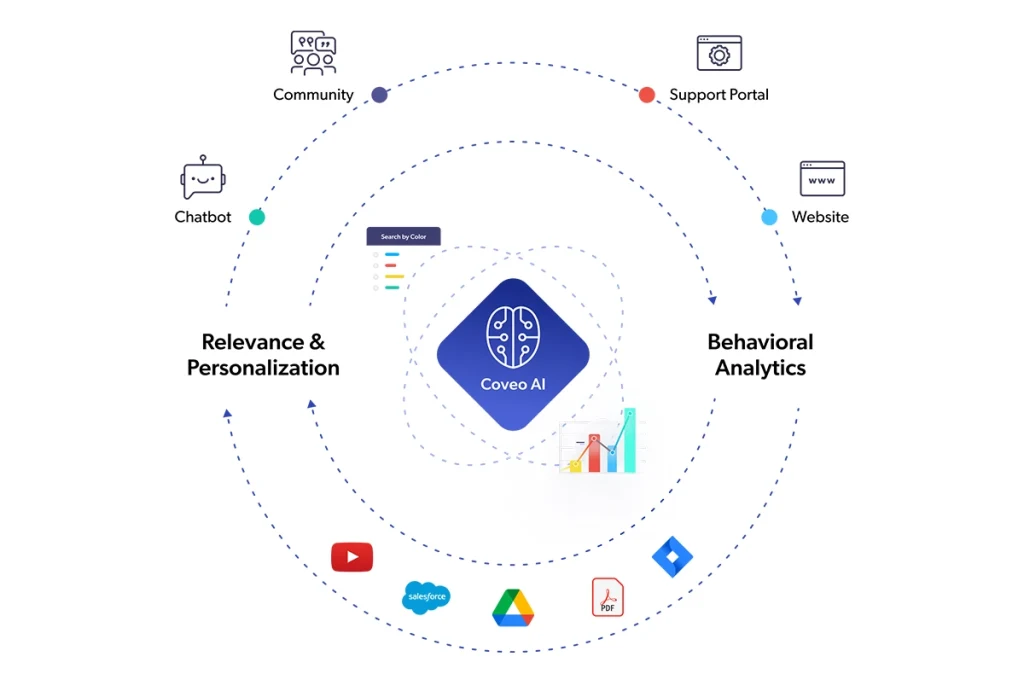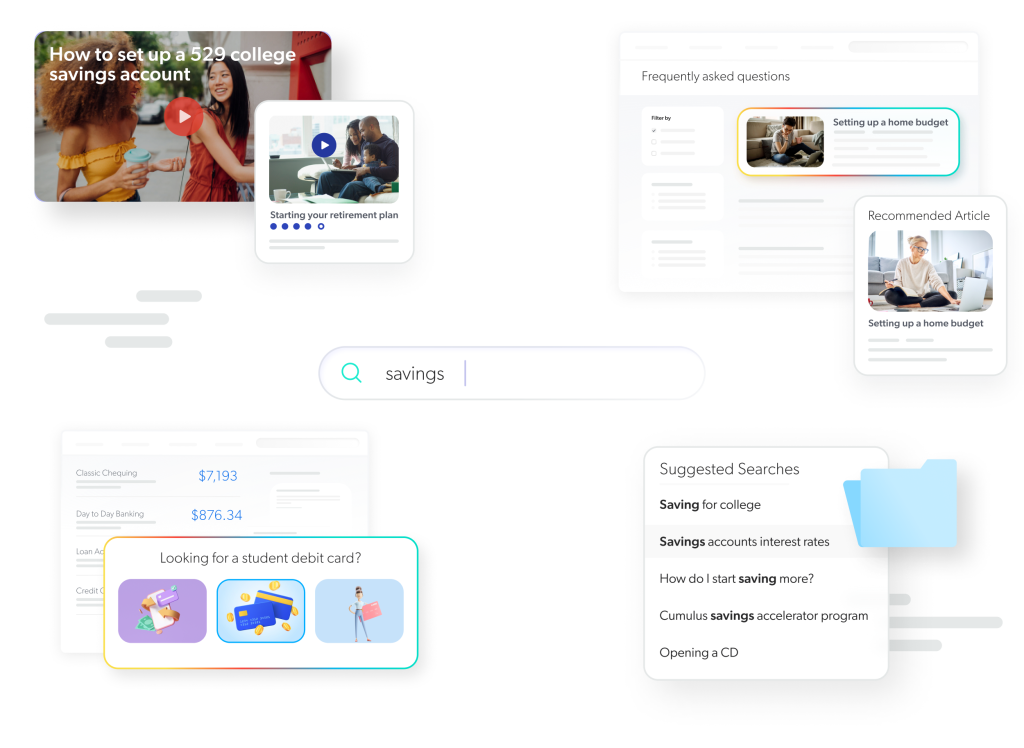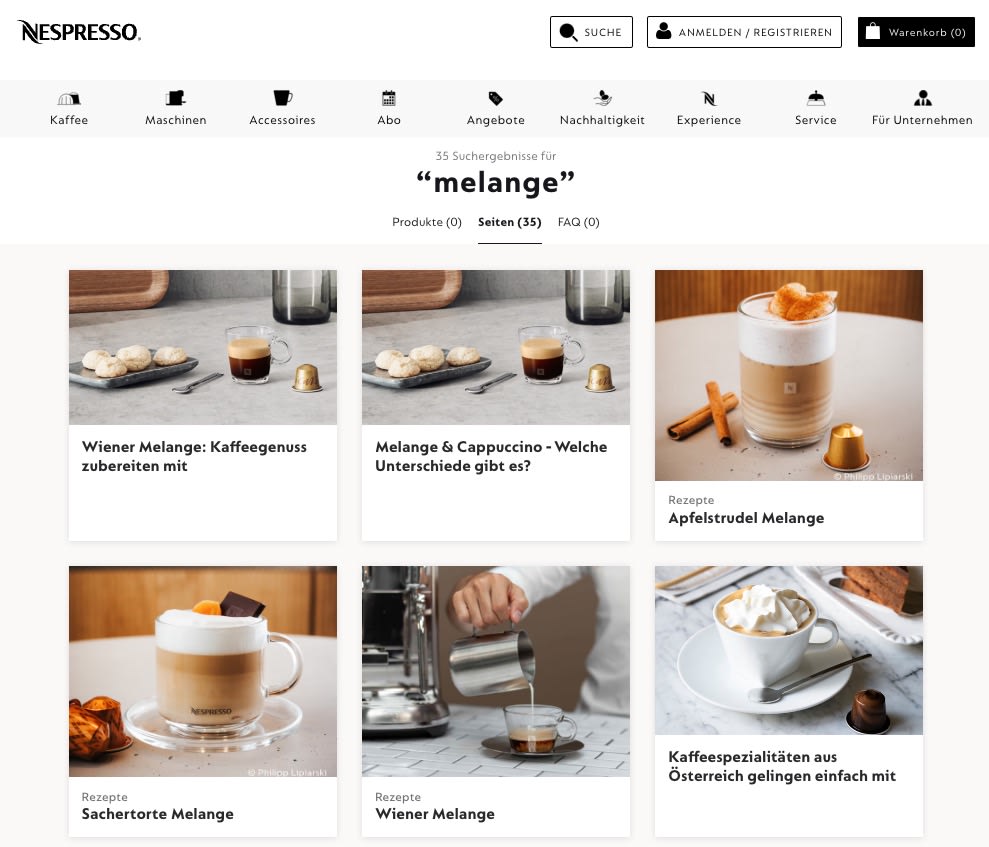We’ve spent the last decade digitizing every touchpoint — yet satisfaction is slipping through the cracks.
Customers can now shop from any screen, anytime, anywhere. Products arrive faster; options feel infinite. But here’s the paradox: despite all that convenience, customer experience (CX) quality is at its lowest point in a decade, according to Forrester’s 2024 US CX Index. Just 3% of brands have achieved true customer centricity and high customer satisfaction levels.
Why? Because flashy front ends and frictionless checkout flows don’t address the issues that plague customers the most. They still struggle to find answers, bounce between inconsistent channels, and feel like brands don’t truly “get” them. In every industry, not just retail, there’s a growing disconnect between digital delivery and emotional resonance — and that’s a recipe for dissatisfied customers and increased customer churn.
This is where AI search becomes a crucial piece of the CX equation. Not a “nice-to-have” — a necessity. It doesn’t just connect content; it closes the empathy gap. AI search personalizes every experience, anticipates customer needs, and empowers customers to feel recognized and valued.
And that? That’s what modern customer satisfaction demands.
How Brands Are Falling Short
Omnichannel expectations
Especially in a digital experience, customers want to feel understood. They expect to be supported across every context, device, and interaction. Thanks to companies like Amazon and Netflix, that expectation isn’t new.
What’s changed is the scale — and complexity — of those expectations. According to a McKinsey survey of 3,500 decision-makers across 12 markets, the new bar for omnichannel excellence is 10 or more channels over three engagement modes (in-person, remote, and self-service) delivered 24/7.

This expectation affects every owned digital channel — from your website to your help center to your community. Your customers are already educating themselves. If they can’t find the right answers from you, they’ll find them somewhere else — often via a social platform like Reddit, YouTube, or TikTok. I.e., not always someone associated with your brand or holding your company’s best interests. And that’s when customer loyalty erodes and unhappy customers emerge.
Lacking self-service experiences
It’s no secret that customers want to self-serve. Gartner reveals that 73% of customers use self-service at some point in their customer service journey, but only 36% of those customers are able to fully resolve “very simple” needs. When we look at the wider spectrum of service issues, the ability to fully resolve in self-service drops to just 14%.
And this isn’t just a customer service problem: A Qualtrics survey of nearly 24,000 people across 23 countries found that $3.8 trillion of global sales are at risk due to bad customer experiences. That’s because when customers don’t get or can’t find what they want, they either decrease spending or stop interacting with that company. (And don’t forget about customer feedback and word of mouth marketing — which can be both beneficial or detrimental to a brand’s customer relationship.)

Digital customer service experiences have the potential to deepen a company’s pool of potential loyal customers. But that pool can just as easily evaporate when those prospects find the experience wanting.
Exhausting assisted support experiences
And as noted above, service leaders aren’t just tasked with crafting intuitive self-service experiences — they’re asked to balance multiple engagement modes, such as contact centers. In a recent HBR report, nearly three quarters of customer service agents surveyed said they rely on three or more digital solutions to resolve customer inquiries. Only 19% have access to an integrated platform. Training these agents to respond more quickly to customer issues can help. But what moves the needle more than training is better tools and access to information.

Less than 30% of organizations provide customer service agents with a single, unified view of the customer, according to the same report. The resulting landscape is one where content is scattered across teams and departments. Information is siloed, outdated, or not available to search. That leads to increased customer effort, longer time to resolution, and lower client satisfaction.
Enterprise challenges that block customer satisfaction
Delivering consistent, coherent experiences across all these channels is stymied by challenges we see over and over here at Coveo:
- Scattered, fragmented content that’s both structured and unstructured
- Content that is owned by different teams and departments throughout the enterprise
- Siloed, basic search that falls short of meeting expectations
- Lack of internal resources like headcount or funding to shore up these gaps
We refer to it as the silo problem — as businesses grow, new needs and issues emerge. These businesses adopt new platforms and technologies to address those needs and issues, but this adoption is done piecemeal. Eventually, this gives way to a patchwork system that has low interoperability and creates a fractured landscape of content pockets, isolated knowledge, and general confusion.

Owning that learning journey means making validated, enterprise-approved information findable, fast. That starts with AI search — because the quality of your content doesn’t matter if your customers can’t find what they need, in the channel and format they prefer.
What Role Does Technology Play in Improving Customer Satisfaction?
AI search helps relieve these enterprise pain points by connecting website visitors with the information they need quickly and with minimal effort. AI search platforms like Coveo can personalize for both anonymous and authenticated users. For the former, using behavioral data, search context, and wisdom of the crowd; and for the latter, infusing searches with data like historical purchase information, customer preferences, and customer behavior.
Why centralization matters
If access to your data isn’t centralized, these omnichannel experiences become fragmented. Information listed on your corporate website might differ from the knowledge displayed on your self-service portal. And that information might also differ from your customer community — which can ultimately make your company seem confusing and contradictory to your digital visitors and existing customers. Unifying access to data is the first step to breaking down silos and making search relevant.

The problem isn’t a lack of information — most organizations have plenty. As it was mentioned above, it’s not uncommon, particularly with large organizations, for information to be housed in different systems and siloed within various teams like Marketing versus Sales. Different data formats add to this complexity and can make it hard for customers (and employees) to find what they need.
The role of a unified index and AI search
Search that pulls from a unified source of information increases customer satisfaction because it makes your data accessible (within reason) and searchable, regardless of where it’s stored. AI search uses machine learning to understand the context of customer queries and deliver the most relevant information to satisfy that query. The best part? You don’t need to overhaul your existing systems to achieve this.
Instead, you can layer a smart search solution that uses AI into your tech stack and connect all your different content sources. This means your customers can find what they need right from the search bar without you having to move data or rebuild your platforms.

A singular, unified index connects disparate systems, so one search retrieves information from everywhere and ranks all results based on who’s asking and what they need — achieving true hyper-personalization. AI search anticipates intent, learns from customer behavior, and delivers relevant results based on the context of the customer and the search itself.
Examples of Enterprises Achieving ROI with Unified AI Search
How to Improve Customer Satisfaction in Retail
Caleres: Driving Higher Conversions with Personalized Discovery
Caleres, the footwear company behind brands like Famous Footwear and Naturalizer, struggled to manage its massive product catalog and deliver relevant results across its 13 websites. Customers faced friction finding the right products, and merchandisers were burdened by static, manual rules.

By implementing Coveo’s AI-search and recommendations, Caleres transformed its digital experience. Customers now see personalized, location-aware results across search and product listings — driving a 21% increase in revenue and 20–25% higher conversion rates compared to the legacy platform. These improvements contributed to stronger customer loyalty, increased engagement, and a higher customer satisfaction score.
Nespresso Oceania: Elevating Digital with AI-Search
Nespresso Oceania set out to reimagine its digital experience — but lacked even basic search on its ecommerce site. Customers couldn’t easily find their favorite blends, and merchandising efforts were manual and hard to scale.

With Coveo’s AI-search and recommendations, Nespresso transformed the shopping journey — adding predictive relevance, intuitive discovery, and personalized product suggestions. The result: a 182% increase in conversions from search, a 30% lift in usage, and a digital experience that feels as premium as the coffee. This new experience led to more happy customers and greater client satisfaction.
How to Improve Customer Satisfaction in B2B Ecommerce
FleetPride: Improving the Digital B2B Search Journey
FleetPride, a U.S.-based distributor of aftermarket heavy-duty truck and trailer parts, needed better search functionality for their website. Their customers often searched for very specific items using exact part numbers, but FleetPride’s legacy search system wasn’t up to the task. They had a siloed system of tracking inventory offline which meant customers often couldn’t see item availability or price.

FleetPride used Coveo’s search analytics and A/B testing to understand where to improve the system, learning what parts weren’t being indexed (for example). After unifying their catalog and digitizing physical catalogs, search became much more accurate. Thanks to these changes, FleetPride saw a 27% increase in search engagement and a 9.6% increase in conversion rate with search — helping them retain loyal customers and improve overall customer sentiment.
How to Improve Customer Satisfaction in Healthcare
Midwestern Health System: Transforming Patient Access with AI-Search
A regional healthcare provider struggled with a fragmented “Find Care” experience — patients faced navigation friction and often had to call to book simple appointments, undermining trust despite strong clinical care.
By embedding Coveo’s AI-search into their site, the system unified providers, services, FAQs, and online scheduling — letting patients filter by criteria like location, language, provider gender, and availability. The result: significantly fewer call center transfers and smoother appointment bookings, reflecting a digital experience that matches their clinical excellence and boosts patient satisfaction and customer retention.
How to Improve Customer Satisfaction in Technical Support
Zoom: Scaling Self-Service Support During Rapid Growth
When the pandemic triggered explosive growth for Zoom, a cloud-based video communications platform, their support site was not designed for self-service. This created a surge in support requests. To address this, Zoom implemented Coveo’s AI-powered search on its support site, making it easier for users to find relevant help content on their own.

As a result, Zoom achieved a 20% increase in case deflection, helping more users resolve their issues without submitting a support ticket and allowing the company to better manage its rapidly expanding user base. The shift to more effective self-service also improved customer satisfaction metrics and customer success at scale.
F5 Networks: Unifying Knowledge to Improve Self-Service
F5 Networks boosted customer self-service success by 11% using GenAI question-answering with AI-powered search. By implementing generative answering on top of their existing infrastructure, F5 was able to synthesize knowledge from their website, technical documentation, customer portal, and other sources.

Coveo’s low-code solution made it simple for F5 to expand to additional touchpoints. Results were significant: $150K saved within 30 days, 63% increase in knowledge article feedback, and 35% more visitors finding desired information through result clicks — all contributing to higher customer engagement, stronger customer loyalty, and more satisfied customers.
Elevating Customer Satisfaction with Unified AI Search
Winning brands offer proactive, dynamic experiences that anticipate customer needs. They achieve this with the right approach combined with powerful technology. This is the only way to meet the high expectations of customers who want search to be effortless and personalization to feel relevant regardless of where or how they interact with you.
AI-powered search can support these types of elevated experiences because it unifies fragmented content across your enterprise and uses AI to understand what customers and employees need, in the context of a given search.
The results are measurable and consistent — reduced support costs, increased self-service success, and higher conversion rates for companies like Zoom, F5 Networks, and FleetPride. All three organizations implemented unified AI search and improved customer satisfaction by:
- Reducing effort: Customers are finding what they need without channel-hopping or repetitive interactions.
- Increasing relevance: AI-driven personalization is creating experiences that feel tailored to each individual based on context and behavior.
- Improving operational efficiency: Support teams are focusing on more complex issues while AI search improves self-service success and easily addresses more routine inquiries.
- Continuously improving: Search analytics reveal customer insights and content gaps so companies can address them quickly.
Ready to Uplevel Your Customer Satisfaction?
Investing in AI search helps you build lasting relationships with customers who feel more understood, valued, and empowered from every interaction with your brand. Whether you’re looking to reduce customer effort scores, boost customer satisfaction survey results, or improve customer retention, we’re here to help.
Reach out to a Coveo search expert for more information on how you can reduce customer effort with unified AI search.
Dig Deeper
Learn more about the best of breed, industry-leading AI-Relevance platform:


